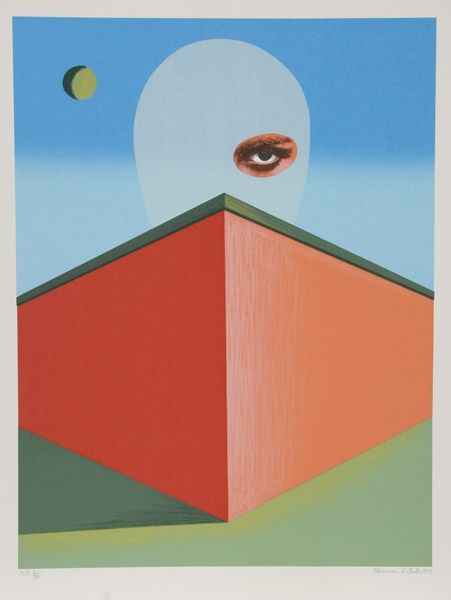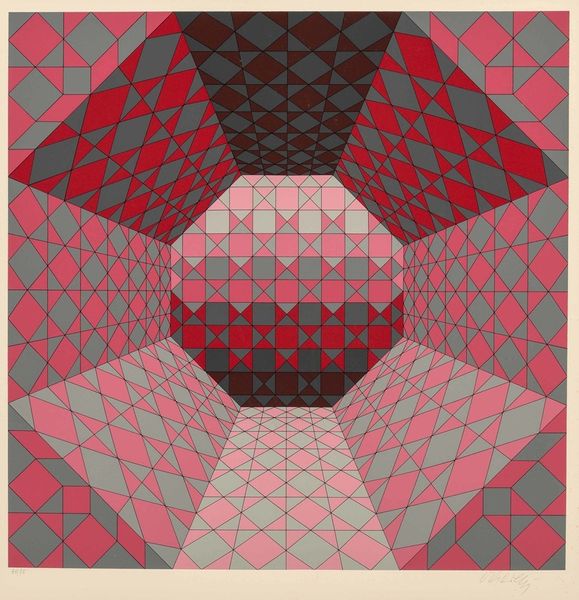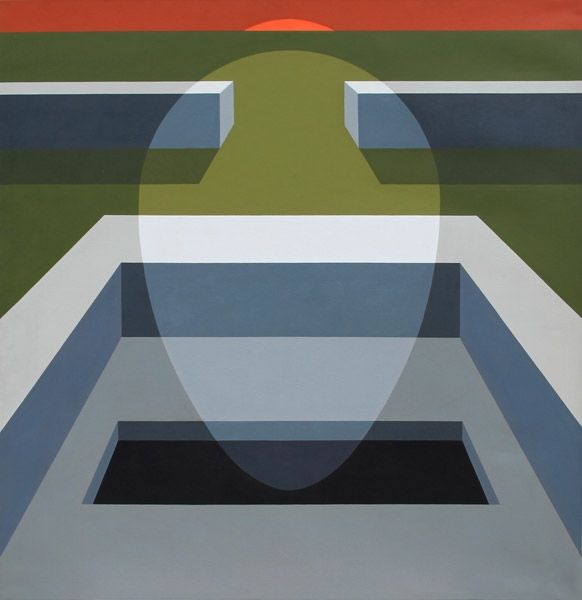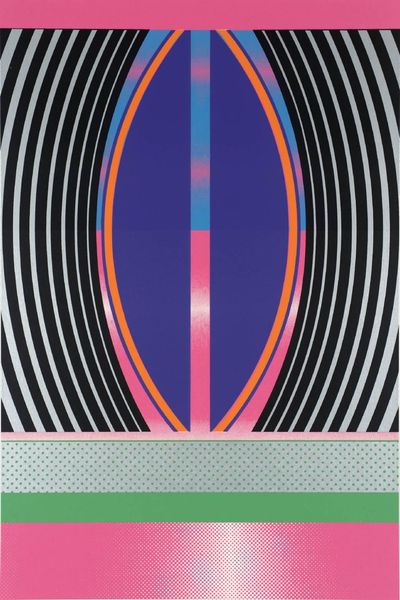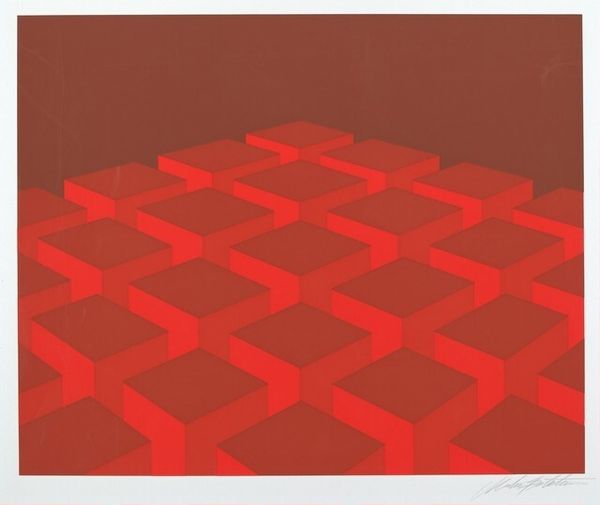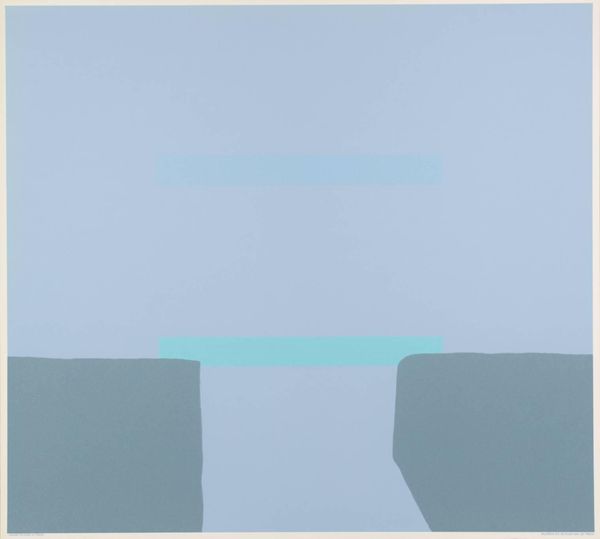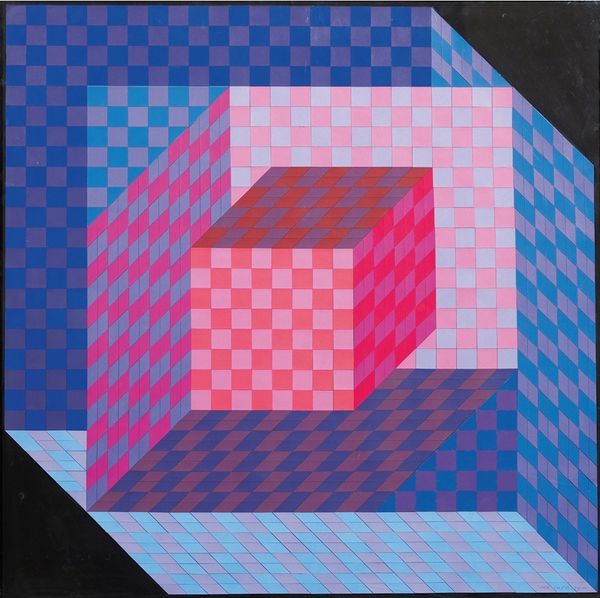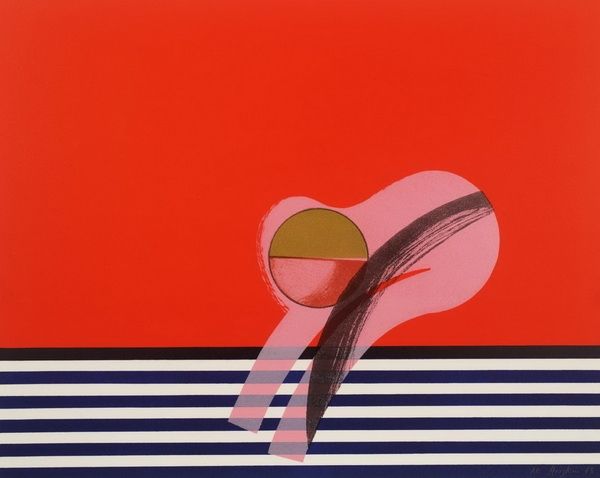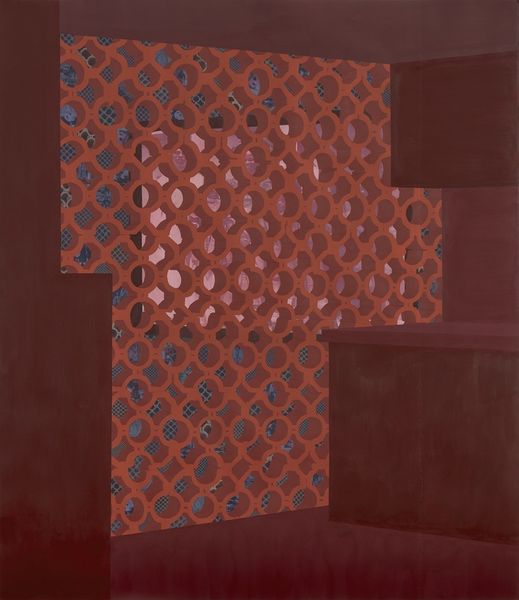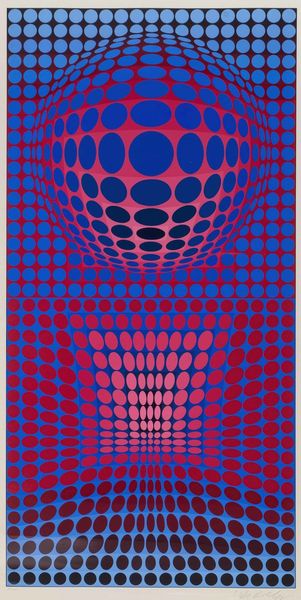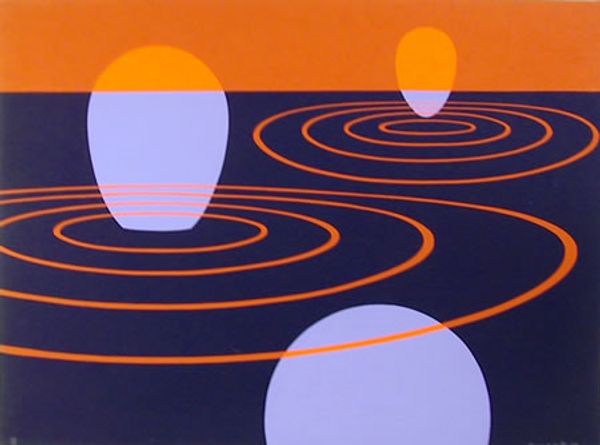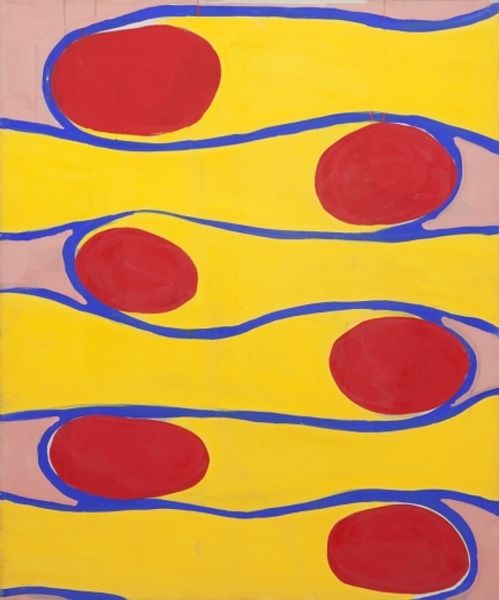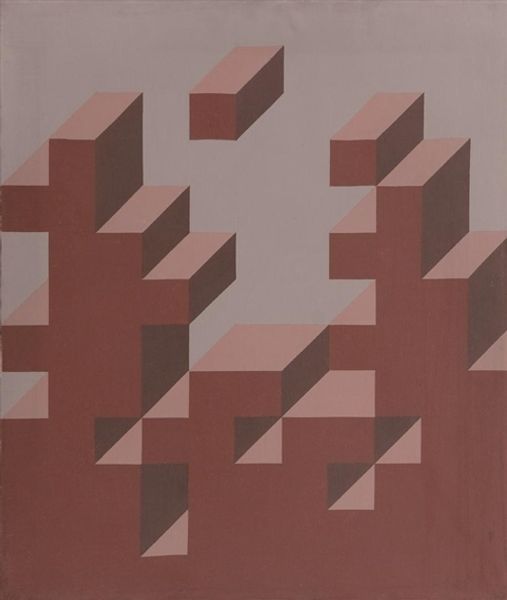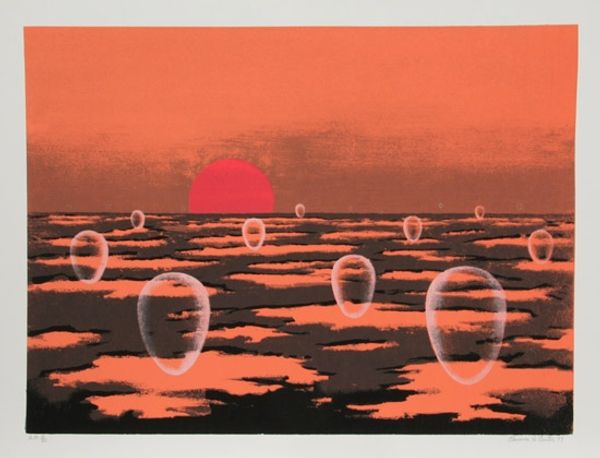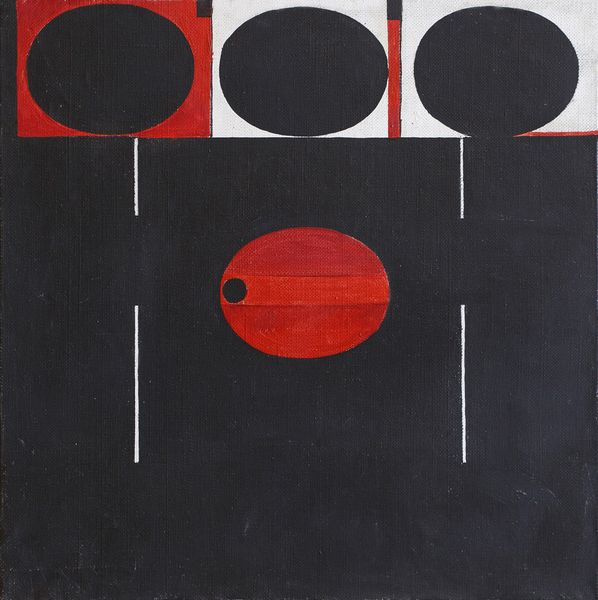
painting
#
painting
#
geometric
#
abstraction
#
line
#
modernism
#
hard-edge-painting
Copyright: Clarence Holbrook Carter,Fair Use
Editor: This is Clarence Holbrook Carter's "Arches," created in 1979. It looks like a painting and gives off a real sense of geometric order. I’m intrigued by how the bright red patterned floor leads to the softer blues and grays of the arches. What do you see in this piece? Curator: Structurally, the work is dominated by the receding plane of the tiled floor, a grid subverted by perspectival diminution, contrasted sharply with the static, planar nature of the arches themselves. The chromatic intensity of the floor tiles demands consideration. Editor: What is the artist trying to get across through that color and form? Curator: Note how the repetition of the arch form is subtly offset. The play between these ordered repetitions and the optical illusion of the floor creates a visual tension. One might ponder what symbolic weight to ascribe to the arch, traditionally a motif of triumph or passage. Here, its flatness renders such interpretations problematic, does it not? Editor: I see what you mean about the arches seeming more flat than grand. Is it fair to see the tile floor as another symbol? Curator: Perhaps it signifies confinement or an ordered space leading to an ambiguous beyond. We see a calculated flattening of pictorial space—akin to elements in hard-edge painting. It compels a focus on the pure relationship of color and form rather than narrative depth. Editor: Thanks for sharing. I am understanding how a visual piece such as "Arches" can invite the viewer to appreciate the artistic intention without delving into conventional symbolism. Curator: Precisely. It's through understanding of structure and form that meaning emerges.
Comments
No comments
Be the first to comment and join the conversation on the ultimate creative platform.
